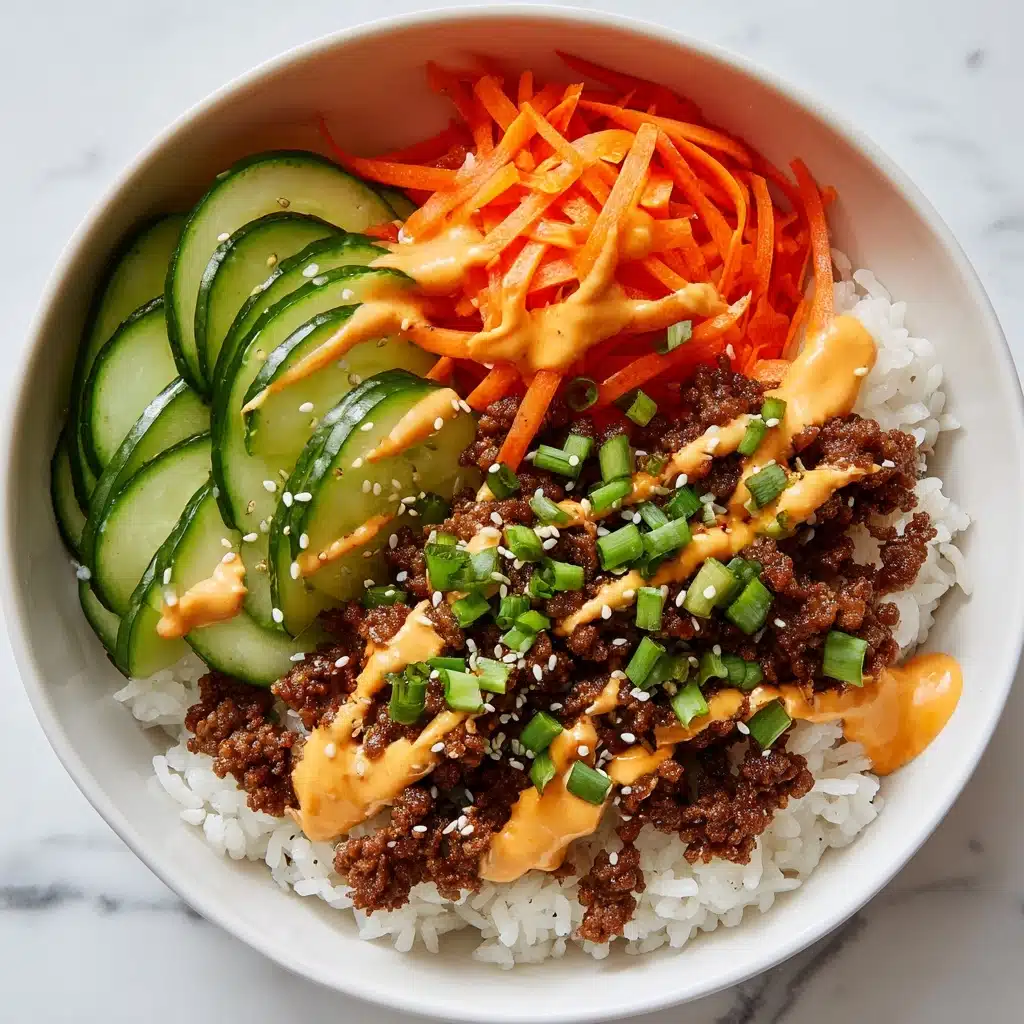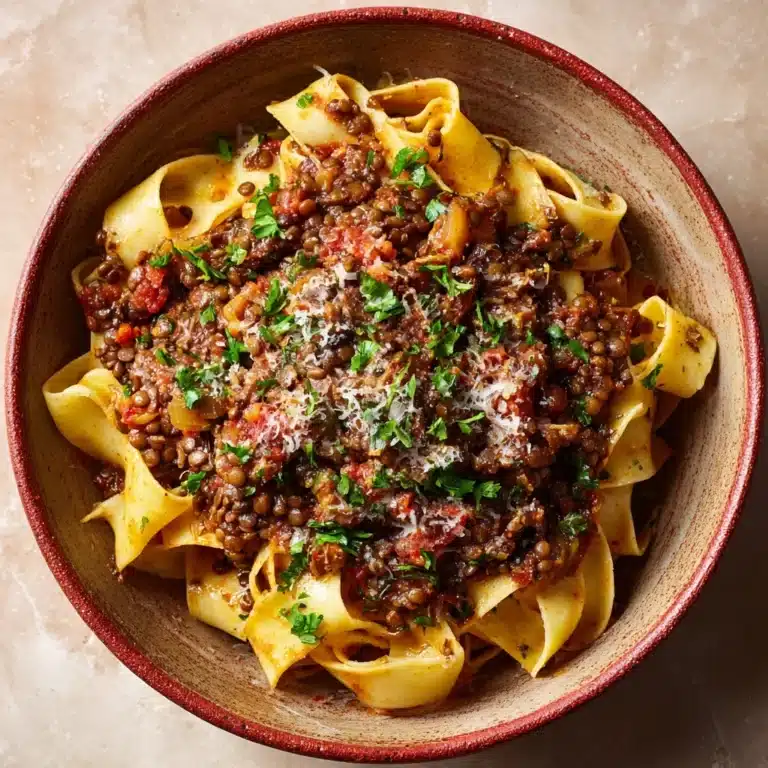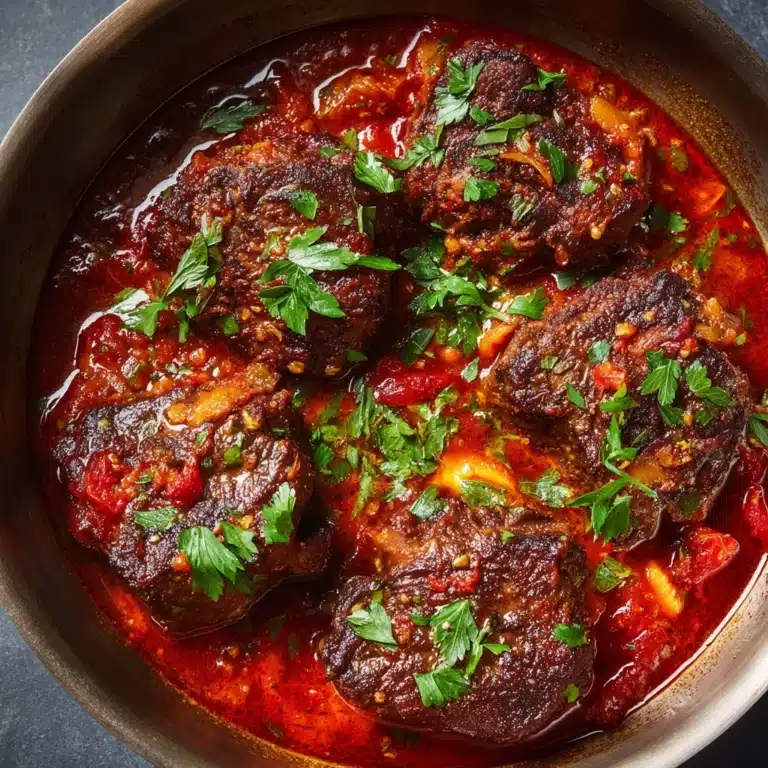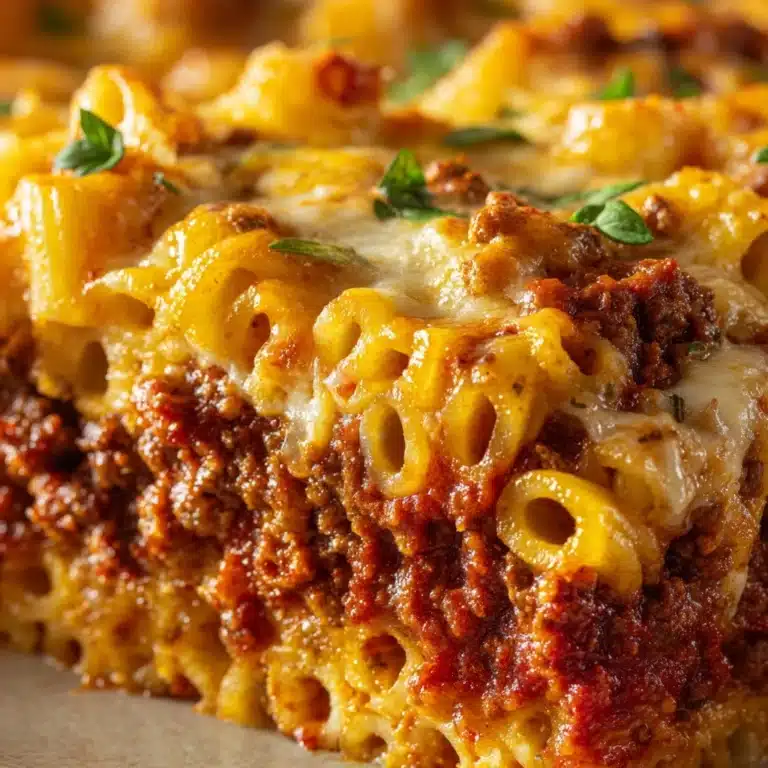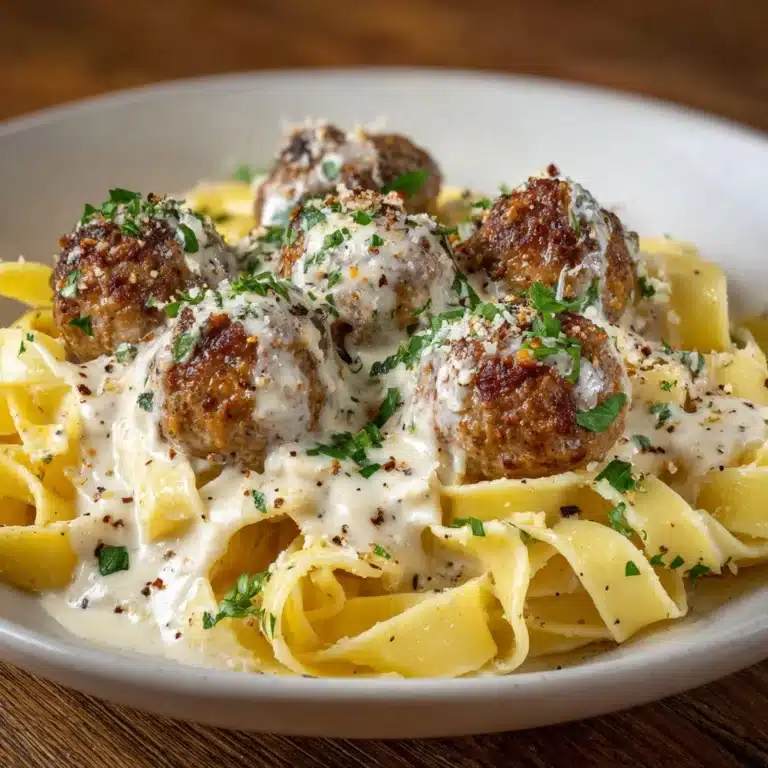If you’re craving a bold, lightning-fast weeknight dinner, these Korean Beef Rice Bowls are about to become your new obsession. Featuring rich, savory-sweet ground beef tucked onto fluffy white rice and finished with colorful, crunchy veggies, this meal brings all the vibrancy of a Korean favorite right into your kitchen. Every bite is packed with that irresistible mix of umami, a gentle kick of heat, and so many textures—making these bowls seriously hard to put down!
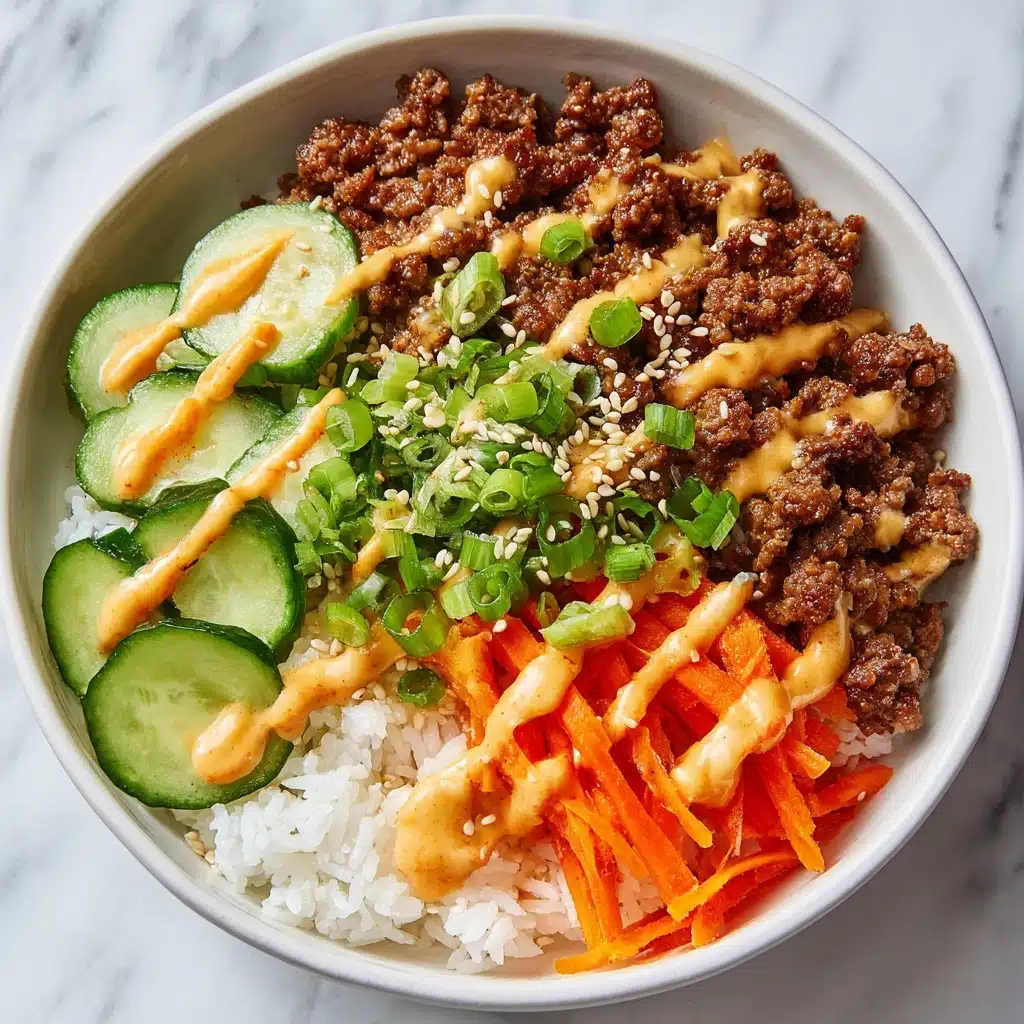
Ingredients You’ll Need
Don’t be fooled by how short this ingredient list is; each item brings big flavor and real personality to your Korean Beef Rice Bowls. From the depth of sesame oil to the sweet-spicy magic of gochujang, here’s what you’ll need—and why each one matters:
- Lean ground beef: The juicy centerpiece, soaking up all those flavorful sauces while staying tender and protein-packed.
- Sesame oil: Nutty aroma and richness start and finish the dish—don’t skip it!
- Garlic (minced): Gives a sharp, pungent backbone that cuts through the richness.
- Low-sodium soy sauce: Adds salty, savory depth without getting overly salty.
- Brown sugar: Offers a touch of caramel-like sweetness to balance the spice and salt.
- Gochujang (Korean chili paste): Brings signature heat and complexity—add more if you love things spicy!
- Fresh ginger (grated): Brightens everything up with subtle zing and warmth.
- Rice vinegar: Lends a gentle tang that lightens the dish.
- Toasted sesame seeds: Sprinkle for crunch and toasty flavor at the finish.
- Cooked white rice: The base that soaks up all that deliciousness—make it fresh or use leftovers.
- Shredded carrots: Add sweet crunch and vibrant color.
- Cucumber slices: Bring cool freshness and a palate-cleansing crunch.
- Green onions (thinly sliced): Lively, grassy finish and a pop of green.
- Sesame oil (for drizzling): A luxurious final touch that makes every bowl aromatic.
- Salt and pepper to taste: Season to your liking and bring all the flavors together.
How to Make Korean Beef Rice Bowls
Step 1: Sauté the Aromatics
Start by heating up that gorgeous sesame oil in a large skillet over medium-high heat. Once the oil is shimmering, toss in your ground beef. Break it apart with your spoon or spatula and let it sizzle away until it’s mostly browned—this usually takes about 5 to 7 minutes. If you see a lot of excess fat, go ahead and drain it off so your bowls aren’t greasy.
Step 2: Build Flavor with Sauce
Now the magic really happens: Add garlic, soy sauce, brown sugar, gochujang, fresh ginger, and rice vinegar straight to the pan. Stir everything together and let it simmer for another 3 to 5 minutes. The sauce will thicken slightly and wrap around every crumbled bit of beef, giving you deeply savory, spicy, and just-slightly-sweet perfection. Take a quick taste and add a pinch of salt and pepper if you think it needs it.
Step 3: Assemble the Bowls
Divide your cooked rice into four roomy bowls. Nestle a generous scoop of the flavorful beef on top of each bed of rice. Then, pile on the shredded carrots, cucumber slices, and green onions. Give it all a little drizzle of sesame oil and a pretty shower of toasted sesame seeds for that signature Korean Beef Rice Bowls finish.
How to Serve Korean Beef Rice Bowls
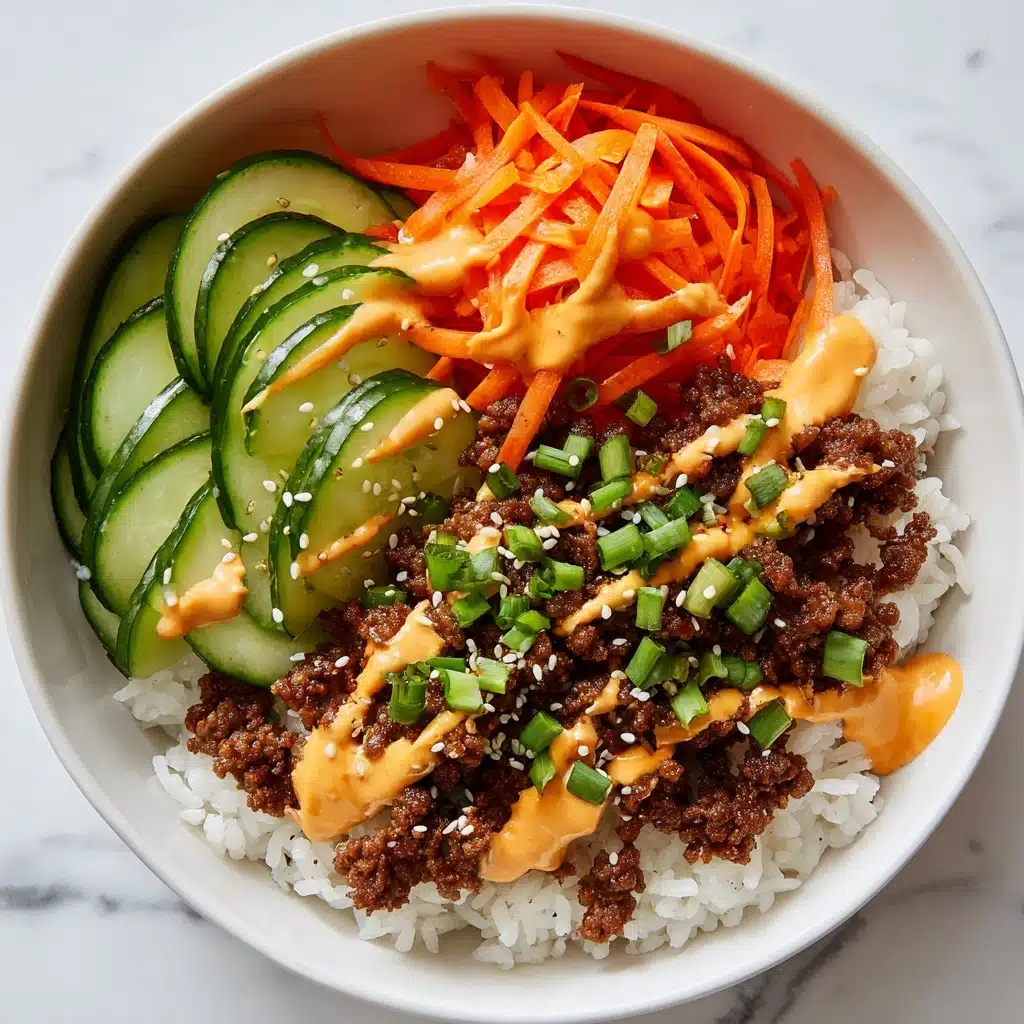
Garnishes
Garnishing is where these bowls really come alive! Sesame seeds add crunch, while the last drizzle of sesame oil wakes up all the flavors. Don’t skip the fresh green onion—it adds a gentle bite and makes your bowl look straight-up restaurant-worthy. If you’re feeling extra, finishing with a fried egg or a sprinkle of chili flakes is never a bad idea.
Side Dishes
Korean Beef Rice Bowls are plenty satisfying on their own, but round them out with a side of quick kimchi, simple pickled radishes, or a small salad of marinated spinach or bean sprouts. Even a bowl of miso soup or some steamed greens are awesome for adding variety and freshness to your meal.
Creative Ways to Present
Beyond bowls, don’t be afraid to get playful! Layer the beef and veggies into lettuce wraps for a handheld twist, or tuck the filling into nori sheets for a quick sushi-inspired snack. Mini rice bowls make a fun appetizer at parties, while meal-prepping everything into portable jars is perfect for lunch on the go.
Make Ahead and Storage
Storing Leftovers
Once cooled, transfer any leftover Korean Beef Rice Bowls beef mixture and rice to airtight containers—store the veggies separately if you can. The beef keeps beautifully in the fridge for up to 4 days, making it a dream for meal prep or speedy midweek lunches.
Freezing
You can freeze the cooked beef mixture for up to 2 months. Just portion it out, let it cool completely, and seal in freezer bags or containers. The rice can also be frozen on its own, though fresh veggies are always best added just before serving.
Reheating
To reheat, just pop the beef mixture in the microwave or warm it gently on the stovetop. If the sauce has thickened too much, add a splash of water or soy sauce to loosen things up. When everything’s hot and steamy, assemble your bowls with fresh veggies for a meal that tastes just as good as newly made.
FAQs
Can I use ground turkey or chicken instead of beef?
Absolutely! Both ground turkey and ground chicken are excellent lean swaps that still absorb the sauce beautifully. You might find turkey or chicken slightly lighter in flavor, but they work wonderfully in Korean Beef Rice Bowls and make them a bit lighter overall.
What is gochujang, and can I substitute it?
Gochujang is a Korean fermented chili paste that brings heat and subtle sweetness, plus tons of umami. If you can’t find it, try a mix of sriracha and a little extra brown sugar for a quick substitute—though for the real deal, it’s worth tracking down.
Are these bowls gluten-free?
With one easy swap, yes: Simply use tamari or gluten-free soy sauce in place of regular soy sauce, and double-check that your gochujang is gluten-free (some brands contain wheat). Then your Korean Beef Rice Bowls will be ready for any gluten-free guest.
What rice variety works best for Korean Beef Rice Bowls?
Short-grain white rice is the classic and soaks up the sauces perfectly, but jasmine or even brown rice work great too. If you want to keep things low-carb, cauliflower rice makes a surprisingly hearty base!
Can I prep these bowls ahead for meal prep?
They’re absolutely meal-prep friendly! Just keep the cooked meat, rice, and veggies in separate containers. Warm the rice and beef before serving, then assemble with fresh veggies and toppings for the best texture and flavor.
Final Thoughts
I can’t wait for you to try these Korean Beef Rice Bowls—whether you need a quick family dinner or a meal-prep hero, they’re just bursting with flavor and weeknight potential. Give them a try, and don’t be surprised if they end up on repeat in your kitchen!
Print
Korean Beef Rice Bowls Recipe
- Total Time: 25 minutes
- Yield: 4 servings 1x
- Diet: Non-Vegetarian
Description
These Korean Beef Rice Bowls are a delicious and satisfying meal with a perfect blend of flavors. Tender ground beef cooked in a savory-sweet sauce, served over steamed rice and topped with crunchy vegetables, this dish is a family-friendly favorite.
Ingredients
For the Beef:
- 1 pound lean ground beef
- 1 tablespoon sesame oil
- 3 cloves garlic, minced
- 1/4 cup low-sodium soy sauce
- 2 tablespoons brown sugar
- 1 tablespoon gochujang (Korean chili paste)
- 1 teaspoon grated fresh ginger
- 1 tablespoon rice vinegar
- 1 teaspoon toasted sesame seeds
For Serving:
- 4 cups cooked white rice
- 1 cup shredded carrots
- 1 cup cucumber slices
- 2 green onions, thinly sliced
- 1 teaspoon sesame oil (for drizzling)
- Salt and pepper to taste
Instructions
- Cook the Beef: Heat sesame oil in a large skillet over medium-high heat. Add ground beef and cook until browned, breaking it apart with a spoon, about 5–7 minutes. Drain excess fat if needed.
- Make the Sauce: Add garlic, soy sauce, brown sugar, gochujang, ginger, and rice vinegar to the pan. Stir well and simmer for 3–5 minutes until the sauce thickens slightly and coats the beef. Taste and season with salt and pepper if needed.
- Assemble the Bowls: Divide cooked rice between four bowls. Top each with a portion of the beef mixture, shredded carrots, cucumber slices, and green onions. Drizzle with a little sesame oil and sprinkle with sesame seeds. Serve warm.
Notes
- For a low-carb version, serve over cauliflower rice.
- Add a fried egg on top for extra protein and richness.
- Adjust the amount of gochujang depending on your heat preference.
- Prep Time: 10 minutes
- Cook Time: 15 minutes
- Category: Main Course
- Method: Stovetop
- Cuisine: Korean-Inspired
Nutrition
- Serving Size: 1 bowl
- Calories: 510
- Sugar: 8g
- Sodium: 850mg
- Fat: 20g
- Saturated Fat: 6g
- Unsaturated Fat: 12g
- Trans Fat: 0.3g
- Carbohydrates: 50g
- Fiber: 2g
- Protein: 28g
- Cholesterol: 70mg
